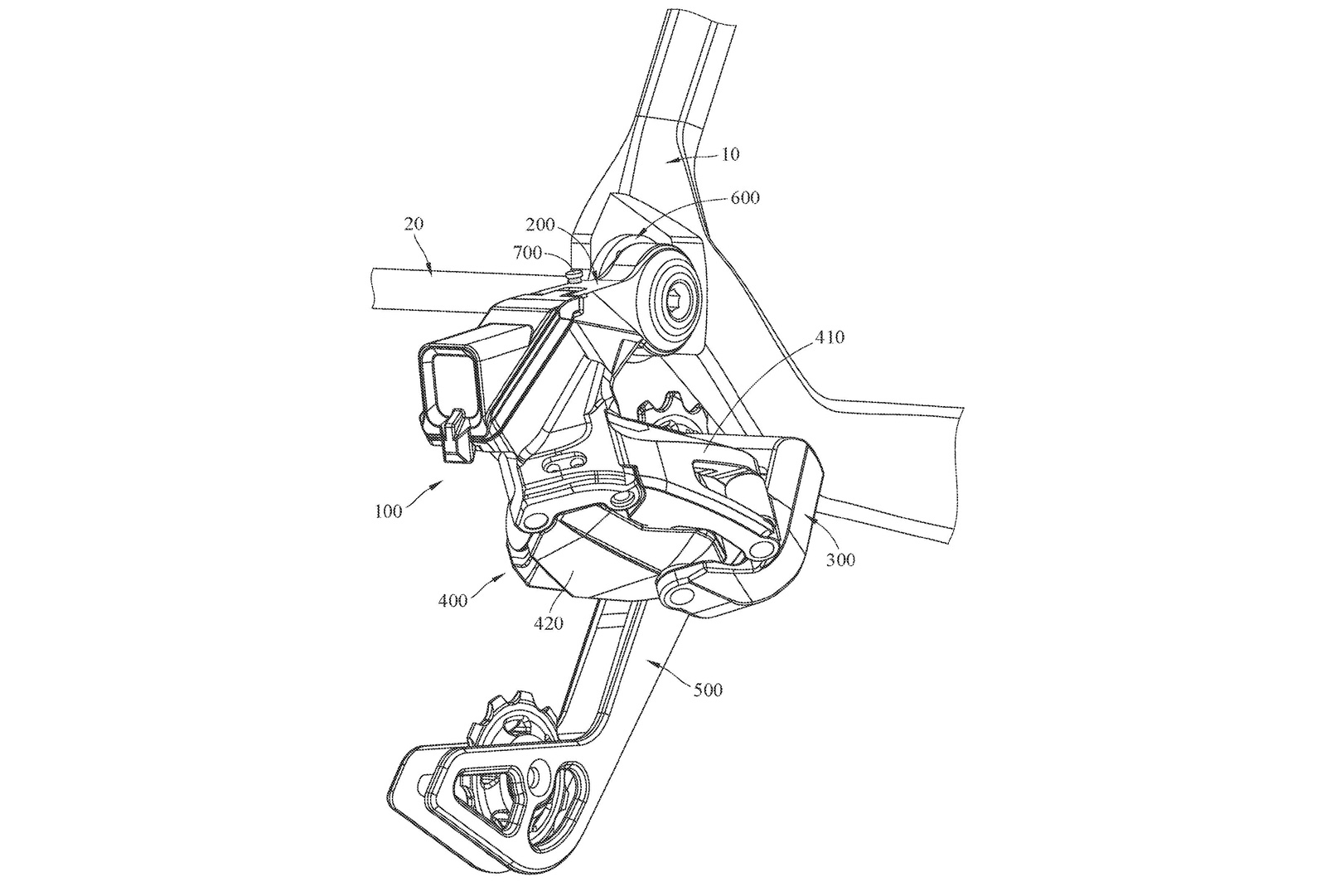Barely a week has passed since TRP announced its all-new EVO12 and EVO7 Mountain Bike Drivetrains, yet today sees a patent publication from parent company, TEKTRO, detailing a completely new rear derailleur design – to no one’s real surprise, it is indeed a Direct-Mount Derailleur, mounting onto the dropout such that it is positioned co-axially with the hub axle.
The patent reads, “the stability of the bicycle rear derailleur can be improved so as to enable the bicycle rear derailleur to resist an impact or a shock”. That is in contrast to the aforementioned new drivetrains from TRP that are designed to be mounted onto a hanger.
This all sounds rather familiar, right? Indeed, since the advent of the SRAM UDH and the subsequent Eagle Transmission launch, it seems everyone wants in on the Direct-Mount action.
TRP Direct-Mount Derailleur Patent
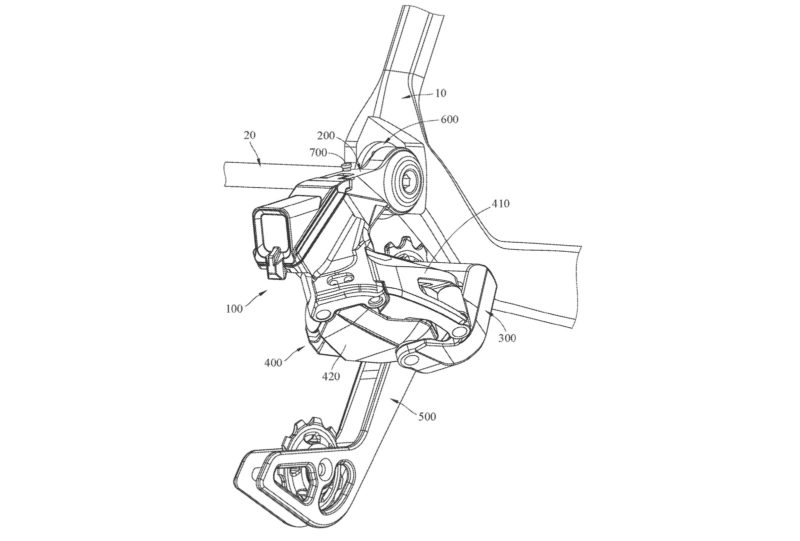
TRP’s “Bicycle Rear Derailleur” Patent (US 20230102982 A1) that published today was actually filed back in September of last year, not long after the first few leaks came out on SRAM’s Direct-Mount Derailleur – now officially named the T-Type Eagle Derailleur.
It clearly depicts a rear derailleur mounted directly to the frame’s dropout, though not in quite the same fashion as the T-Type Eagle Derailleur, or indeed Shimano’s Patented Direct-Mount Derailleur that we covered earlier this week.
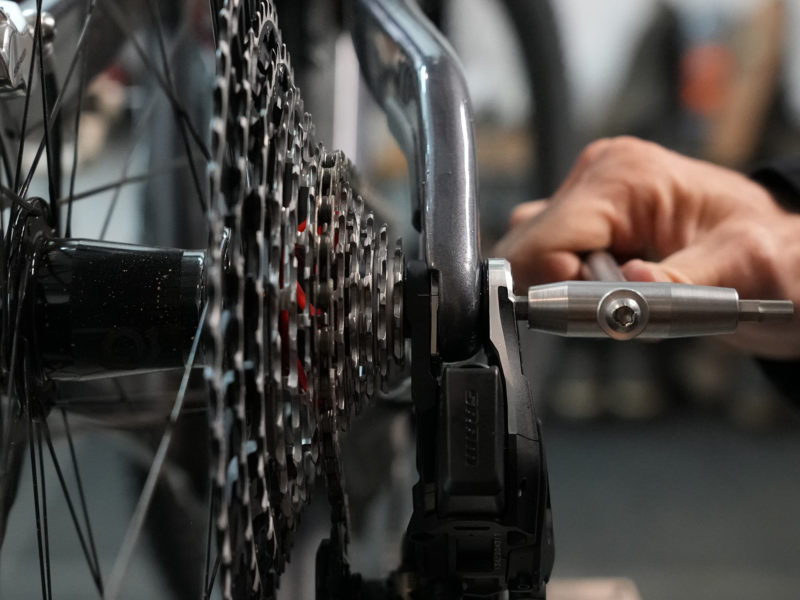

The aforementioned derailleurs see a two-pronged attachment, wherein two arms of the rear derailleur’s base portion sandwich the dropout. In both instances, the rear wheel would need to be removed in order to remove the derailleur.
The example we see from TRP has a single arm that sits outboard of the dropout. In all embodiments (and there are several), an adapter sits between the outboard face of the dropout and the inboard face of the derailleur’s base portion. Invariably, it has a tab designed to interface with a B-Screw on the derailleur’s base, presumably to allow it to be set up nicely with a range of different cassettes.
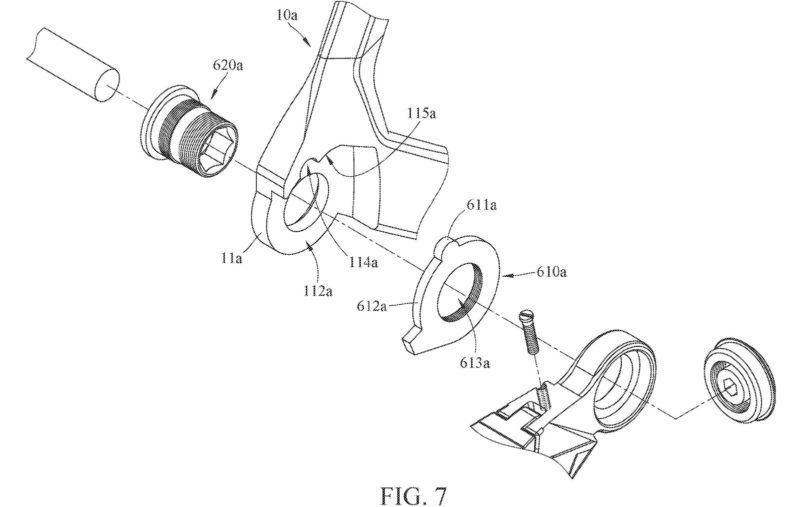
The arrangement certainly has its similarities with the T-Type Eagle Derailleur’s attachment to a SRAM UDH dropout and, realistically, we see no reason why TRP’s concept derailleur couldn’t be paired with the now-ubiquitous SRAM UDH dropout that has been adopted by a large number of big-name bike manufacturers over that last few years. SRAM designed that outboard interface to be flat and featureless, something that will allow other drivetrain manufacturers to engineer their own direct-mount solution around it.

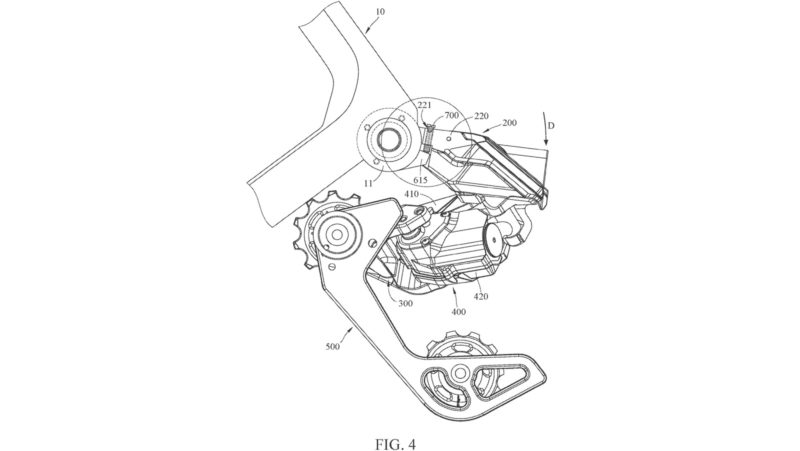
Referring to Fig. 11 (below), TRP’s proposed Direct-Mount solution uses three separate components; a bushing (620c), an adapter (610c), and a fastener (630c). One notable difference between this system and SRAM’s system is the placement of the adapter (or slip-plate) – on TRP’s derailleur, a slip-plate sits between the derailleur and the dropout. On the SRAM system, this slip-plate is located on the inboard face of the dropout. Either way, it still looks as though it will still allow the derailleur to rotate clockwise (back and up) in the event that it gets whacked from the front.
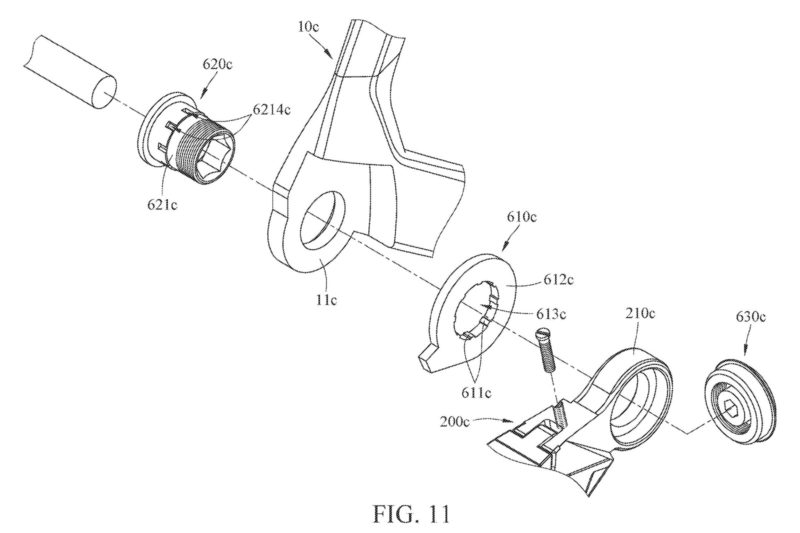
In TRP’s example of a Direct-Mount Derailleur, it is possible to remove the derailleur from the frame without removing the rear axle, given that it mounts onto the outboard face of the dropout only- one only has to remove the fastener.
This is of course also true with use of a regular hanger setup, but in the case of SRAM’s T-Type Derailleur, the rear wheel/axle needs to be removed in order to remove the derailleur.
Will it be electronic?
Well, we haven’t seen an electronic group from TRP yet, so I wouldn’t be surprised to learn that they were working on one. Sure, the drawings do make it look like there is space to house a battery aft of the parallelogram, but the text of the patent document makes no reference as to whether or not this derailleur would be electronically or mechanically actuated. The patent is principally dedicated to the detail of how the derailleur is mounted to the dropout, largely ignoring all other constituent components of the derailleur.
It’s a “no comment” from TRP at this time.
